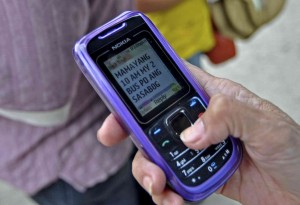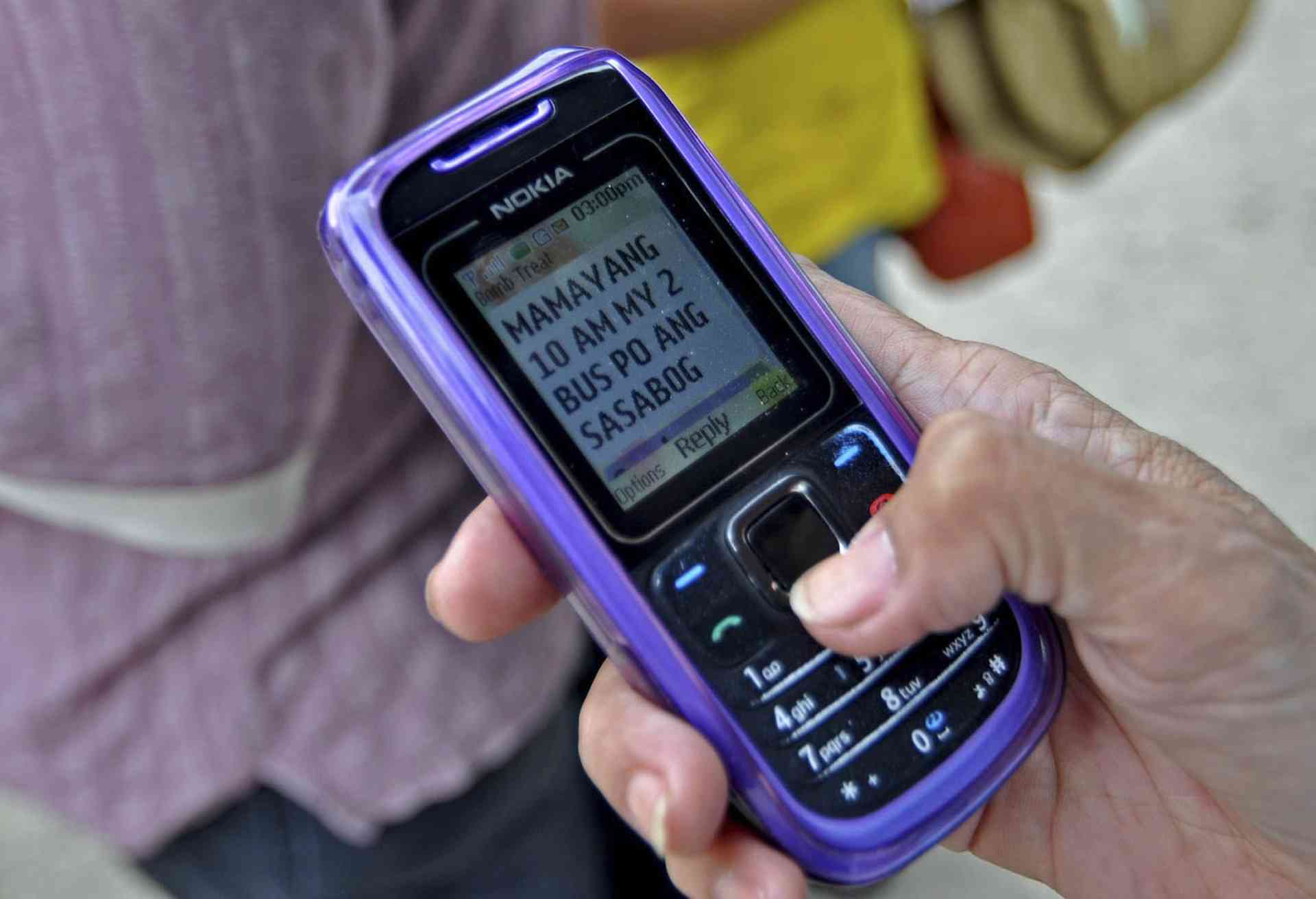
WHEN 20-year-old Ben D. encountered his first bomb threat while taking the entrance exam for law, he expected the whole ordeal to include explosions and lots of action.
“My imagination saw it like the movies,” he said in an online interview. In Cebu City where he grew up, he had never experienced a bomb threat or anything close to it.
Real life, however, played out differently than in the movies. On March 21, he, along with other law applicants, had to evacuate San Beda College in Manila’s University Belt because of what the school later confirmed as bomb threats from an anonymous caller.
The incident shocked the Cebu native. “I was afraid because I realized that maybe this is a common occurrence in Metro Manila and would haunt me for years while I ‘m in law school,” he said.
His fears turned out to be accurate. A mere seven months into law school, he was again in the Mendiola campus when two bomb threats disrupted classes noon of Oct. 7 and 10 in the morning of Oct. 11.
“Perfect attendance!” he said in jest.
The threats were sent through text messages on both incidents. And along with taunts that the bombs would never be found, the text messages also contained vindictive words hinting of a prior personal conflict: “Kayo ang bahala dahil sa ginawa ninyo sa amin, lalo na sa akin, (it’s your lookout because of what you did to me)” read the Oct. 11 text that also circulated on social media.
But just like the first incident, they were all hoaxes. As of press time, no perpetrator had been identified.
San Beda was not the only school hit by a recent string of bomb threats in the Metro. According to data collated by the Philippine National Police (PNP), there were 33 bomb threats in the city from January to October this year, all “negative,” meaning, police did not find a bomb. Of that number, 19, or 58 percent, targeted schools, including well-known universities Ateneo de Manila University (Feb. 12), the University of Santo Tomas (Feb. 26), Far Eastern University (July 31) and Miriam College (Oct. 9).
But Supt. William Señoron, chief of the Philippine Bomb Data Center (PBDC), said schools, particularly their faculty, students and parents, need not panic, as all reported bomb threats addressed to schools this year were prank calls.
Believing these hoaxes, he said would play into the perpetrators’ hand. “A bomb threat becomes successful if it creates widespread panic to the point that normal operations are impeded.”
As a research and development center under the PNP, the PBDC is tasked with keeping track of all information pertaining to bomb incidents, bombing suspects, bomb threats and bomb-related modus operandi.
Most bomb threats addressed to schools are hoaxes meant to cause panic, Señoron said, adding that “a bomb threat remains a threat until you see something suspicious, like a bag or other suspicious-looking material. When you find anything like this, the threat ceases to be a threat because it’s been verified,” he said.
And while the PBDC does not have access to the updated investigation into the 19 incidents, Señoron said it can be concluded that disgruntled students were the most common suspects behind majority of the bomb threats in 2014.
“Students are more inclined to gimmickry,” he said. “If, for example, they’re not content with how the school is run, they can easily access through their mobile phones’ SMS their classmates and the administration.”
Information technology, too, has made it easier to spread the hoax. “In schools, messages are easily forwarded because there are a lot of people around. If I were a student who got one, I’d probably forward it to my classmates, creating a multiplier effect, a multiple dissemination of information. Then people start panicking,” the PBDC official said.
Sending bomb threats through text also means little to no communication between the threat’s sender and receiver, Señoron added. “In the past, bomb threats were called in through the (landline) phone, which means the call is easier to trace. With SMS or text, there may be no dialogue.” The one-way communication makes it easier to deliver the threats without fear of being found out.
Most of the information disseminated is through forwarded messages so the communication is one-way; you can’t expect a reply from the original sender, he added.
Ben theorized that “trolls,” or people who want to play cruel pranks on others, propagated the three threats in San Beda this year, which were all sent through text and posted on the popular Mendiola Files group on Facebook (since deleted). “I expect more bomb threats because neither the school admin nor the police were able to trace the perpetrator[s]. If they were made by trolls, we can expect them to find satisfaction in doing it again—as they did for the third time [in Oct. 11]—without fear of getting caught.”
The PBDC confirms that assumption. Compared with this year’s 33 cases, only five bomb threats were reported in 2013, with only one of the threats targeting a school—Santolan National High School in Pasig City on Jan. 22 last year.
No bomb was found in the 33 incidents this year. In one of the five incidents in 2013, however, a MK2 Frag Grende without an explosive and fuse was found at the Land Transportation Franchising and Regulatory Board office along East Avenue in Quezon City.
“[When we compare] the year 2013 with 2014, we can see a big difference. In my years with the PBDC, this is the first time I’ve seen this big a number of incidents,” said a PBDC analyst who requested anonymity for lack of authority to discuss the issue. “Probably it’s a matter of reporting because lots [of threats] are being reported. But then again, the number is significantly higher compared with that on previous years.”
PBDC data, which also comes from media reports and other credible sources, support the popular theory that the bomb threats were meant to disrupt exams. February and October had the most bomb threats at six each; followed by January and March, two each, and June, July and August, one each.
Also in common were the wording and content of the bomb threats sent via text. Almost all threats were in Filipino, with not a few of these containing an apology at the end of the message. The message warned of an explosion at a particular time and urged the students to leave the area. None of the threats presented a demand.
The fact that no demands were made in all 19 instances proved that the main intention of the bomb threat senders was to “sow fear and panic,” according to the PBDC analyst.
In the case of San Beda, the bomb threat sender succeeded. Another San Beda law student, Christina D., said that in the wake of the Oct. 7 and Oct. 11 bomb threats, police checked the students’ bags and pockets for any suspicious items, while K9 units were positioned around the school the following week during the school’s final exams.
In contrast to all that hubbub, the office of San Beda’s rector-president, Rev. Fr. Aloysius Maranan, OSB, released only brief notices of class suspension. There was no mention of a bomb threat in either message. The Oct. 11 announcement, in particular, read: “Vacate the school premises immediately. Please do not go near the school premises today.”
Beyond scare tactics, the bomb analyst said two other motives may be behind the bomb threats: “to minimize casualties, if there really is a bomb, so people can escape”—as the target is only the particular establishment—or to maximize it instead, because if the bomber “is well-versed on the emergency procedures of the targeted establishment, he or she would know the evacuation areas and routes, and these could be where the bomb is planted. The bomb would then detonate during the evacuation procedure.”
The political stability of an area could also be behind bomb threats, which are more rampant in Mindanao than in Metro Manila, Señoron said. “If you compare… [the incidents in Metro Manila are] all purely threats, unlike in Mindanao where explosions occur even without warning.”
In Mindanao, people are so used to explosions and bombing that bomb threats are no longer reported in the media unless an actual explosion occurs, he added. So common are bombings and explosions in this region that when a bomb explodes, people expect business as usual the next day, “as long as the damage isn’t that big,” the police official said.
Added the PBDC bomb analyst: “When there is a bomb threat [in Mindanao], there is a corresponding demand. ‘If you don’t give us protection money, we will bomb this place.’ In this scenario there is a greater possibility that the bomb threat will result in an actual explosion.”
Media reportage has however made bomb threats in the metro more prominent, with the information delivered faster and to a wider audience. And that’s not necessarily a good thing, Señoron said. It could cause panic, he added. “If a bomb threat sounds like a hoax, don’t highlight it so much or take notice… there should be an understanding between police and media.”
In fact, the analyst said, text messages and media coverage proved detrimental in the case of the Feb. 12 bomb threat at the Ateneo. Because the unverified information had spread too quickly via forwarded texts and media exposure, people panicked and tried to get out of the campus, causing monstrous traffic the along C5 route.
Schools and other establishments, Señoron said, should be given training on how to handle bomb threats before they even encounter one. Usually, the training is given only after the actual explosion, he added.
Schools and local companies should instead follow what their counterparts in the United States consider a common precaution: Teach their employees how to search their surroundings for suspicious objects that could prove dangerous.
One proposal meant to encourage this response is for the PNP to require establishments seeking to renew their business permits to submit a bomb incident plan, the PBDC official said.
Meanwhile, to discourage bomb threats from disgruntled elements in its ranks, companies and schools should make known the legal aspect of the issue. Presidential Decree No. 1727, or the anti-bomb joke law, punishes those who make bomb-related threats and maliciously spread false bomb-related information. Penalties include up to five years’ imprisonment, a P40,000 fine or both. No perpetrator has yet been punished for school-related bomb threats but most previous cases involve bomb jokes on airlines.
TODAY, only a few private companies in the Philippines have approached the PNP for bomb awareness seminars, Señoron said. As a result, these companies no longer have to call the police because their employees’ prior training has helped them handle the hoaxes. “They even have drills, but only within their company,” he added.
But training school personnel should start with the administrators, Señoron said, with local police districts involved in conducting the seminars. Among the items to be taught is how to do an initial search of the school premises before the police is called, “because they are more familiar with their surroundings and the items in the vicinity.” He added: “The moment they see a foreign item, that’s the time they call the police.”
As for training the students, this might not be such a good idea, Señoron said. In light of the recent slew of bomb hoaxes, sharing too much information on a school’s bomb incident protocol might inspire more students to plan their bomb hoax more meticulously.
The PBDC instead recommends that student participation be limited to general guidelines, knowledge of designated evacuation centers and “bomb drills,” similar to drills conducted in case of earthquakes or fires.
Ben, the San Beda student, observed that like the earthquake and fire drills, students do get used to bomb threats, “they ended up laughing and joking about it.”
The self-proclaimed “expert in earthquake and drills,” however, noted that the third time students were asked to evacuate the campus because of bomb threats, they were more cautious and orderly, and police response was quicker.
Some students however believe that the school could have been too lax, making it vulnerable to a spate of bomb threats in a span of seven months.
In a letter to San Beda rector-president Maranan posted on his blog, law student Mark Anthony C. Cabasag lamented “the incapacity of the institution to provide security not only to the students but also to its employees.” Cabasag suggested more stringent security measures for vehicles entering and leaving the school grounds.
But until these precautions are in place, Ben said he has to take personal responsibility for his security. From previous experience, he said he has learned to stay calm and move away from the dangerous situation: “I did not let my curiosity overpower my instinct for safety.” •













































